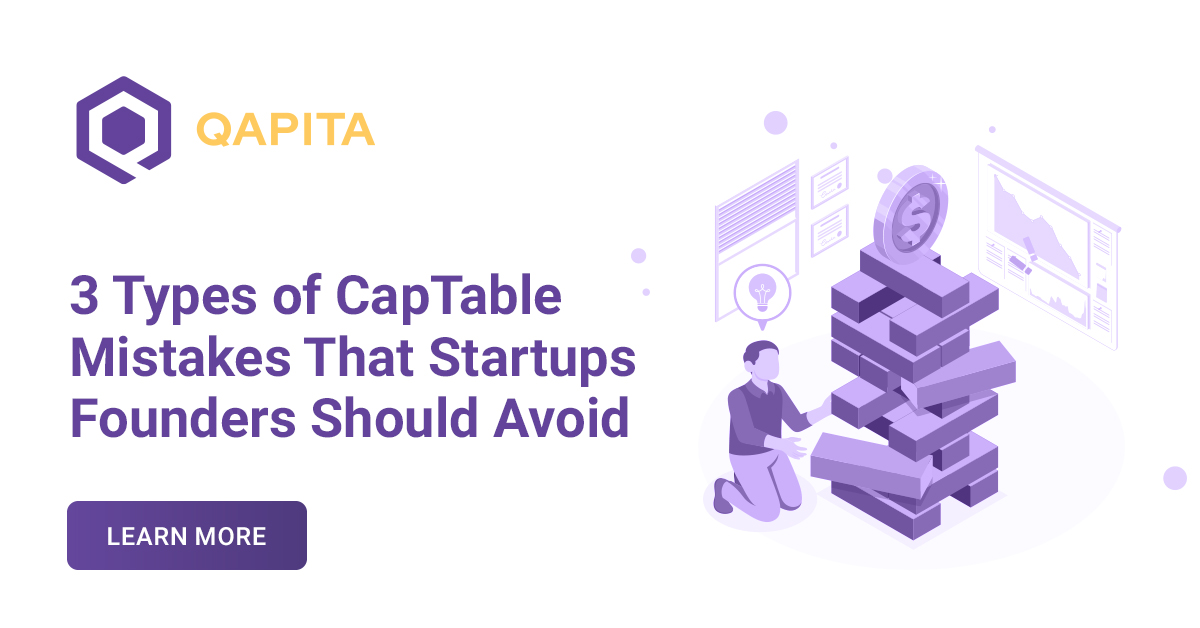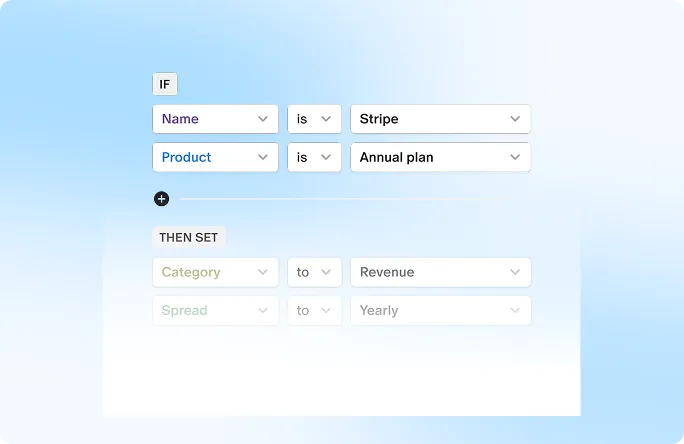It may seem very simple to manage a CapTable for your early-stage startup, but there is a high risk that it'll have errors as your CapTable changes. As a founder, when it comes to the ownership of your company, you cannot afford to have ambiguity. There are many factors and minute details which you have to take care of continually.
Any mistake not only affects your current CapTable; these mistakes get carried into the newer versions and compounds with every subsequent update making it worse.
In this post, I'll discuss some common types of mistakes that startups founders make related to the CapTable and how you can avoid them.
1. Mistakes Related to Legal Aspects
There are a lot of mistakes you can make if you don't take legal advice when required.
Many times, startups founders skip consulting a legal advisor to cut operational costs. Because of not understanding the legal clauses, many founders may not have a clear idea of what they are signing up for.
This creates a lot of costlier and irreversible legal problems in the future. It can lead to unexpected equity dilution, discrepancies in dates and names that can spiral into legal issues
Let's see some examples below:
Example 1: Not understanding liquidation preference.
Liquidity events are exit events in which the company owners or investors sell their equity for cash or other liquid assets. Some examples of liquidity events are launching an IPO (initial public offer) and merger and acquisition.
In most cases venture capitalists will have liquidation preferences clauses in the term sheet to ensure that they recover their investment before the founders do, and many times founders are not aware of it. So it comes as a surprise during a liquidity event that investors are claiming a higher share of the liquidation proceeds.
Additional clauses such as capital multiplier and participating liquidation preferences may further skew the sharing of proceeds.
Always consult your legal counsel before signing the term sheet during a fundraiser.
When maintaining a CapTable in a spreadsheet, you can only see the current shareholding and not the sharing of the proceeds in a liquidation event. Though it's possible to model the CapTable for a liquidation event, it's very time consuming to do so for every scenario in a spreadsheet.
Example 2: Discrepancies in Dates
There is confusion with respect to what is the right date to record a transaction. Which of the following dates should I consider as a founder?
1. Date of the Share Subscription Agreement or the Investment Agreement
2. Date on which the investors remitted the funds
3. Date on which the shares are actually allotted in a Board Meeting
The right answer here is 3. The date on which the shares were allotted in the Company's Board Meeting. Confusion with respect to dates of allotment may result in discrepancies in statutory records and may delay the fundraising process.
Similar issues may crop up with respect to the recording of correct dates for ESOP grants as well. As the vesting schedule is dependent on the grant date, errors in recording grants correctly may lead to claims from employees especially if they have terminated their employment.
Use of spreadsheets to track these dates only compound the problem with different dates being recorded in excel vs the regulatory documents and filings. It is always best to have a single source of trust for this as is provided by equity management software.
Example 3: Discrepancies in Entity Names
When it comes to legal documents and certifications, it's important to record exact entity names. Any mistakes in the names can cause confusion and delays in the sale/transfer of securities. It may also cause financial loss to the stakeholders.
Furthermore, the problem caused by it is not limited to financial loss. It also makes the aggrieved party seek legal recourse for what they are entitled to receive.
For example, a company has two employees, Abhishek Kumar Mishra and Abhishek Kumar Mehta. If the company records their names as Abhishek Kumar M, the exact owner of a grant may not be clear.
Always use complete names and a unique identifier for every stakeholder in the company. For employees, it can be their employee identification number/ PAN number; there can be a similar identifier for consultants, investors, and other stakeholders.
You can also use a CapTable management system to allocate every stakeholder with unique identity numbers.
We've helped a lot of founders avoid making these legal mistakes. We've partnered with legal counsel, financial advisors, CA and company secretary firms for the same. CapTable management tools help a lot in making operations and many processes accurate, error-free and legally compliant.
2. Relying on Spreadsheets
Spreadsheets can work when you have very few stakeholders in your company - typically friends and family. However, it gets complicated as companies grow and start raising funds from professional investors and issuing ESOP grants to employees.
CapTables change more frequently than most founders think. And then, there are limitations to using spreadsheets.
Consequently, it is essential to use the right tool from the beginning to manage CapTables properly.
If you don't equip yourself with the right tool, you can run into many problems, such as:
Outdated CapTable:
It happens when founders manage CapTables in Excel or Google sheets. They typically don't keep the cap table updated to other pressing issues at hand, such as product development and marketing.
But delaying this leads to more effort and time spent as you have to find multiple documents, confirm the right version and match them with CapTable. Not only is this more prone to errors, but we've also seen this is done in a hurry at the time of the next round of funding is required.
Always update your CapTable as soon as the funding event happens to avoid such issues. There are tools that can do it for you with few inputs from your end. It also makes your startup transaction ready for your next round of funding.
Equity management tools make your CapTable management easy and free up the founder's time and bandwidth so that they can focus on other essential tasks.
Issues with Documents Management:
All company and stakeholders documents are vital. They need to be kept updated regularly, and their old versions should be preserved for reference.
Not maintaining proper documents often causes confusion and issues between stakeholders about their holdings.
If you manage the documents poorly and do not store them in the right places, it's challenging to find them when required. And this is one of the primary reasons for an extended due diligence process and delays in funding.
A CapTable management software stores the relevant documents properly and cross-referenced to the right transaction/ stakeholder. You can check, sort and save documents based on different categories according to your needs.
Not Communicating with Stakeholders Regularly
Having a transparent system and sharing relevant information on a timely basis with stakeholders builds trust and confidence in your startup.
It builds long term relationships with your stakeholders and motivates them to contribute and to help your company grow.
Usually, employees don't understand and appreciate the value of their ESOPs, and they fail to exercise it or leave the company for higher cash salaries. The main reason for this is startups don't communicate the value of ESOPs to their employees.
As employee retention is crucial, you need to educate employees about the wealth creation potential of ESOPs or SAR, whatever you provide. It keeps them motivated to take a longer-term view and stay back in your startup.
3. Mistakes Due to Operational Issues
Even after spending a lot of time on a spreadsheet, it's very likely that you'll make mistakes updating your CapTable for future events. There are so many small things to account for in a cap table that it's common to miss them while updating them manually.
Hence, it is important to have a proper tool that takes away the burden of managing your CapTable.
Not Tracking Termination and Exercise Windows
When an employee leaves your startup, you should lapse the vested and unexercised option after a fixed period (called the post-termination exercise period) and update the CapTable accordingly.
If you fail to update the CapTable, the former employee may claim options outside of the exercise windows, and they may exercise options more than what they earned. Update the CapTable when employees exit and terminate to ensure an accurate allocation of the options.
CapTable management tools automatically record the exit dates and allocate them to their accounts based on the eligible and exercised values.
Not Tracking Transactions
Every transaction must have a unique ID to track it.
Suppose a company has offered more than one grant to an employee, and they exercised them at different times. In that case, it becomes challenging to maintain a record of which one they exercised and how much.
Let's say you offered Abhisek (an employee of your company) ESOPs, when he joined, with a vesting period of four years. Additionally, you provided him with an options-based incentive at the end of his first year. Since both these grants were issued one year apart, their vesting schedule and strike price and the number of stock options differ. If Abhishek exercised any of these options, it's difficult for you to track it as there are many things at play:
1. which option was exercised when,
2. how much was exercised,
3. at what rate, and
4. how many options are left unexercised.
It can be avoided by providing every grant with a unique ID. CapTable management tools generate a unique ID for every grant to ensure these issues do not happen.
How Can Qapita Help Avoid These Mistakes?
It's challenging to maintain a CapTable, but it's a crucial thing to do. Qapita helps startups and private firms manage their cap table efficiently in the following ways:
1. To always be transactions ready. Investors always see CapTables before making investment decisions. Qapita makes you ready with details for sharing with prospective investors.
2. Qapita helps you to model scenarios and plan for fundraising. With an updated CapTable, you can make informed decisions on how much to raise based on the percentage of ownership you are willing to dilute.
3. Qapita keeps your CapTable updated and well organized, helping your legal counsel to understand it and guide you properly.
4. It allows you to report your CapTable with investors. Typically investors require the cap table to be reported once a quarter. While sharing, you can choose the level of detail on the CapTable you want to share across multiple investor groups.
5. It also helps you stay compliant with taxation and regulatory requirements.
6. Qapita also helps you to communicate the value of ESOPS with your employees.
A CapTable plays an instrumental role for your company at every stage from fundraising, to creating ESOPs pools to exit plans. Hence, as a founder, you should make all efforts to avoid these mistakes.


 Equity management
Equity management

 Fund management
Fund management

 Fund management
Fund management

 Fund management
Fund management










-min.png)



























